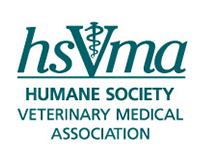Simulators Expand Training and Reduce Harmful Animal Use in Veterinary SchoolsApril 26, 2011 by Susan Krebsbach, DVM New simulators developed by Colorado State University and Cornell University veterinary schools are providing additional evidence that alternative methods of training can substantially improve veterinary student and veterinary professional skills, while reducing the unnecessary or harmful use of animals. At Colorado State University College of Veterinary Medicine and Biomedical Sciences (CSU CVMBS), veterinarians have created a product with synthetic body parts that look, feel and even bleed like real skin, muscles and vessels. This artificial tissue model, currently christened "The Body Wall" while developers work on a formal name, is the creation of Drs. Fausto Bellezzo and Dean Hendrickson. It started when Bellezzo, a researcher and veterinarian, speculated how the gory scenes depicted in horror films could be translated into a teaching tool for veterinary students. This led to a partnership with Hendrickson, director of CSU's Veterinary Teaching Hospital. Together they developed a silicone-layered, artificial tissue model that simulates skin, connective tissue and the muscle of animals. A realistic and safe learning environmentThe artificial replicas of sections of animal bodies―such as an abdominal wall―create a realistic learning environment for students that bridges the gap between classroom lectures and procedures, such as tying surgical cuts and sutures on real human or animal patients. “It is a significant, stressful leap for medical and veterinary students from the classroom to the surgery suite,” said Hendrickson. “Industry standards for training sometimes actually teach incorrect techniques, or skills that don’t translate into real-world situations, so students don’t have the ability to realistically prepare for surgery before [working on] a live patient. These artificial simulations help students master their technique, dexterity and confidence before they operate for the first time on a person or someone’s pet.” Chelsea Zimmerman, a fourth-year veterinary student, agrees. “The simulation feels like the real thing. I remember as a second-year vet student using these carpet pads and the sutures just rip out, don’t stay very well, and there’s no tissue layers. I’m amazed by the tissue layers on this [model]―the skin, the subQ, even the muscle. After having been in clinics for a year, this feels like the real thing.” CSU veterinary students are using "The Body Wall” on a regular basis in their second-year principles of surgery class and later in their third-year surgery course (watch a video illustrating the use of this model). Hendrickson said, “Our hope is to reduce the number of live animals used. If all goes well, we can almost immediately reduce the number of live animals used by 66, and with a little time and tweaking, perhaps many times that number.” Not just for surgical trainingStudents at Cornell University College of Veterinary Medicine (CU CVM), are receiving advanced critical care training with new rescue mannequins nicknamed “Robo-Jerry II" and "Robo-Fluffy," based on RescueCritters® Critical Care Jerry and Critical Care Fluffy mannikins.  Cornell veterinary students practice CPR techniques on a "Robo" mannequin. Cornell University College of Veterinary Medicine Dr. Dan Fletcher, assistant professor of Emergency and Critical Care (ECC) at CU CVM, designed these sophisticated rescue mannequins and a software program with help from two Cornell engineering and architecture students. Fletcher then worked with colleagues in the ECC section of the Cornell University Hospital for Animals to develop teaching scenarios for the simulator, all of which follow the 2010 American Heart Association Guidelines for Cardiopulmonary Resuscitation, which was released in October 2010. After each scenario is played out with the mannequin, the student group reviews a video of what transpired. A trained facilitator then leads a discussion, and students draw conclusions about what they could have done differently. According to Fletcher, the real learning occurs during these debriefing sessions. A proven and effective way to educate“There is a large [amount of] literature on the effectiveness of this type of training in medical education, and I think it represents a real paradigm shift in our ability to teach clinical concepts, not only to veterinary students, but to veterinarians who want to learn new skills and clinical approaches, to veterinary technicians, and to others who work with animals or who have companion animals and want to learn basic first aid and stabilization techniques,” said Fletcher. “By providing them [students] a safe environment in which they can try things and fail without harming a patient, we can increase their ability to learn clinical principles. I firmly believe that I learn the most from my failures, and simulation allows students to fail in a way that is safe for patients and themselves.” The “Robo” mannequins are currently used on the ECC clinical rotation for cardiopulmonary resuscitation (CPR) rounds for fourth-year students at Cornell. In addition, first- and second-year students use the mannequins during a summer rotation through the ECC service, and many third- and fourth-year students have used them as part of the regular clinical rotation. After using the "Robo" models, the students participated in an anonymous online survey and everyone reported that their knowledge had expanded as a result of the simulation. One student commented, “This is a very effective way to teach CPR. I had not considered when to check the heart rate during compressions. The simulation answered this question and basically solidified the entire process in a way that PowerPoints or written notes couldn't achieve.” Where to find alternative teaching toolsThe Humane Society Veterinary Medical Association (HSVMA) supports the use of alternative training methods to supplement and help veterinary students prepare for training involving the use of live animals. Visit HSVMA's Alternatives in Education Database, which features these, and thousands of other alternatives products, available to students. Dr. Susan Krebsbach is a veterinary consultant for HSVMA. She also has her own veterinary animal behavior consulting service and is actively involved in feral cat rescue. |
